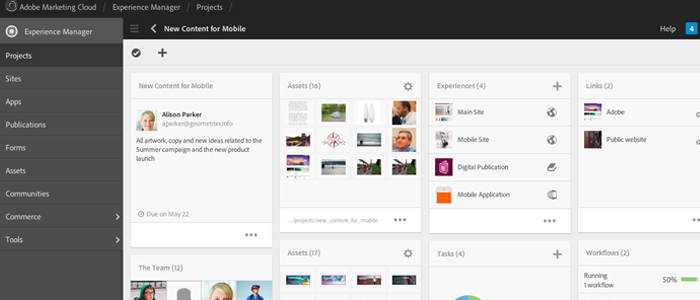
Digital is Driving Transformation in the Financial Sector

Digital transformation is permeating every area of the banking and financial sector globally. Online and mobile sales are projected to make up 40 percent of overall sales in the sector by 2018 (according to Adobe), so there is a very real pressure to ensure that digital initiatives are up to the job of driving revenue. While digital often is a C-suite priority, indicators suggest that the vast majority of financial firms are only partially succeeding. For instance, a 2016 survey by Adobe and Econsultancy reported a full 88 percent of executives describe their firms as only “halfway there,” or worse, on their paths to digital maturity.
Why should this be the case? After all, banks on the whole have not lagged behind with the rollout of online services and other digital capabilities. In some parts of the world, the advances in mobile, digital and micropayment services have literally put power in the pockets of people who would otherwise not have access to traditional banking services.
On the other hand, banking and financial services are subject to strict regulations. Digital initiatives need to deliver the desired outcomes for the customer and the business, but within stringent guidelines governing access, management and storage of data.
What’s certain is that the pressure on financial institutions is mounting to adapt the way they deliver services to customers. The ubiquity of smartphones, laptops and tablets and shifting consumer habits are driving banks to be creative in how they differentiate. In a market where transactional services are becoming increasingly commoditized, many are seeking to redefine the customer experience as a point of competitive differentiation.
Given the vital role of digital maturity, we examine five tenets of digital transformation in the banking and financial sector.
1. Digital transformation never stops
Digital transformation is not a capability you purchase, implement and forget about until the next upgrade. Firstly, it encompasses much more than the IT and operations teams. It requires a culture and management shift; hence it needs backing from the top. Secondly, digital transformation is an adaptive approach that needs to continually refresh. It might be best regarded as an operating expense, not a capital expense.
2. Put the customer at the heart of the transformation…
One of the first steps firms need to take is to re-imagine the business from the standpoint of the customer. The basic question they need to answer is “How can we improve our customer’s experience?” This might lead an institution to fundamentally re-imagine the design of a service it offers, or it might mean it focuses on improving the overall UI to ensure seamless customer interaction across a range of devices and services.
3. …But don’t forget about your employees
An interesting report from Deloitte University Press suggests that financial services firms “focused primarily on leveraging digital capabilities to become customer experience champions, have not devoted enough attention to the other side of the coin: the employee experience.” It goes on to demonstrate the importance of “marrying the customer and employee experience” in order to prepare for “digital disruption”.
Similarly, one of the key takeaways from our own Digital Maturity Summit involved the need to enhance digital workflows, that is to say, how the business operates. One of the best means of doing so is automation. It is hugely challenging to keep workflow up to date, but efficiencies gained in this way have the power to disrupt business models. As machine learning and other AI technologies are increasingly integrated into systems and workflows, the ability to adapt intuitively and scale efficiencies will increasingly become a competitive differentiator.
4. Put your ear to the ground
Everywhere you look there is feedback, potentially valuable snippets of information about your business and how it might improve. The challenge financial firms face is channeling that feedback intelligently, i.e. gathering it, analyzing and extracting value from disparate pieces of data.
Data analytics becomes increasingly relevant for those firms trialing different types of bots to improve customer service interactions. These exchanges have been predominantly text-based, but increasingly feature different formats (video, pictures, VOIP) as bot capabilities – and consumer readiness – advance.
5. Address security and privacy issues from the start
Few other industries are as tightly regulated as the financial sector, and rightly so. It does mean that innovation is tempered with a certain degree of caution as stringent compliance guidelines must be met. One approach that’s gaining currency is the DevSecOps movement, which seeks to “bake in” security right into the development process, rather than beginning to focus on it in the performance testing phase.
If you work in the financial sector and you are planning a digital initiative, let us know what’s on your agenda. If you would like to dig deeper into any aspects of the tenets of digital transformation we’ve outlined today, let us know. We’d love to discuss your particular project in depth.







